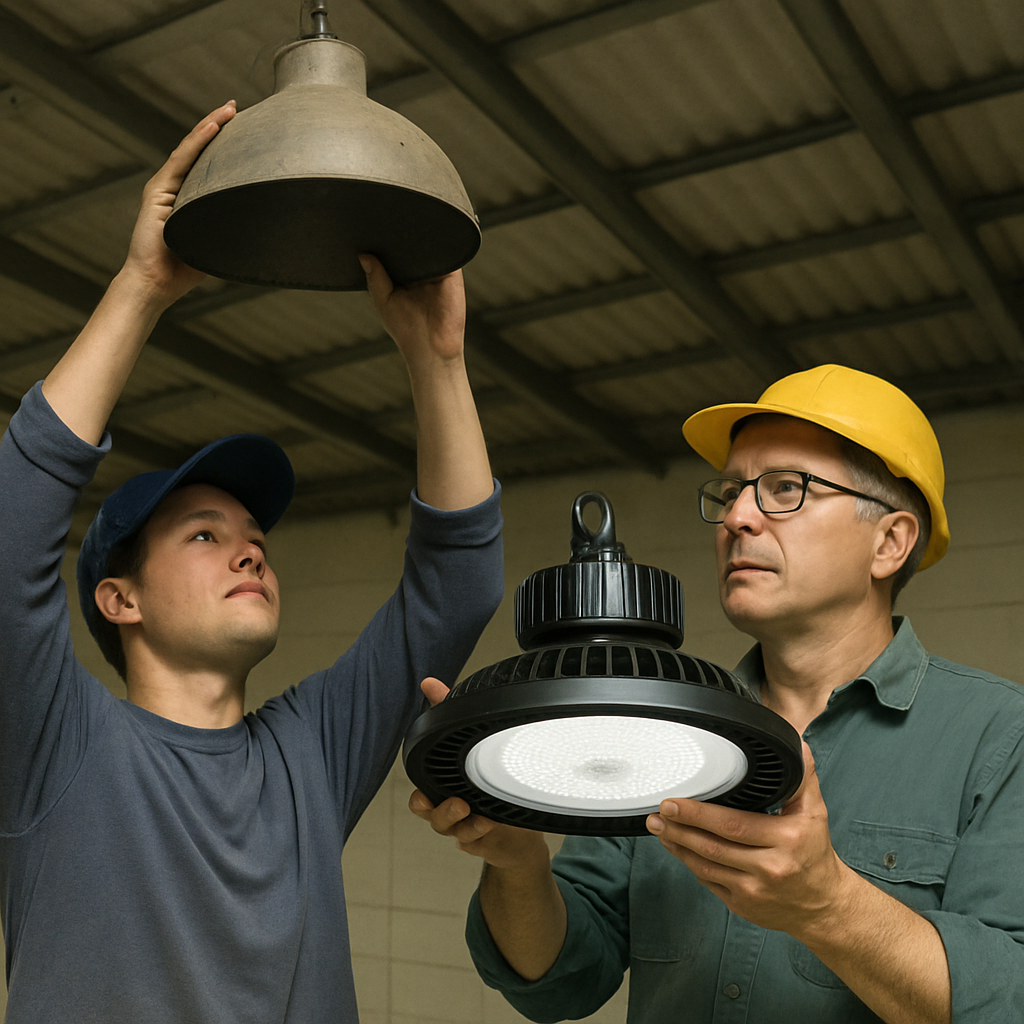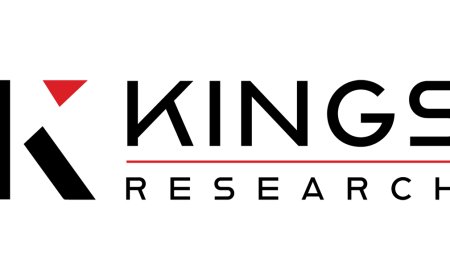Total Cost of Ownership: High Bay LEDs vs Traditional Lighting
Explore the total cost of ownership high bay LEDs vs traditional lighting. Discover energy savings, maintenance benefits, and long-term advantages of high bay LED lights for efficient, sustainable lighting.

When it comes to lighting large spaces like warehouses, factories, and gymnasiums, high bay lighting is essential. These expansive areas require powerful illumination to ensure safety, productivity, and energy efficiency. However, choosing between high bay LED lights and traditional lighting options can be daunting due to the variety of factors involved. In this article, we'll explore the total cost of ownership of high bay LEDs compared to traditional lighting solutions. By considering factors such as energy efficiency, lifespan, maintenance, and environmental impact, we'll guide you to make an informed decision for your lighting needs. This comprehensive analysis will help you understand not just the upfront costs, but the long-term implications of each choice.
UnderstandingHighBayLighting
High bay lighting is designed for ceilings that are typically 20 feet or higher. This type of lighting is crucial in ensuring adequate illumination in large spaces, which directly affects productivity, safety, and energy consumption. The right lighting can enhance the visibility of tasks, reduce the risk of accidents, and contribute to a more efficient working environment.
Traditional Lighting Options
Traditional high bay lighting options include metal halide, fluorescent, and high-pressure sodium lights. These technologies have been the mainstay for decades, primarily due to their ability to deliver intense illumination over large areas. However, they come with their own set of challenges, particularly concerning energy consumption and maintenance. Traditional lighting tends to have higher operational costs due to frequent replacements and the need for additional components like ballasts. Moreover, they often produce heat, which can increase cooling costs in a facility.
HighBayLEDLights
High bay LED lights, on the other hand, are the modern solution to lighting large spaces. Known for their energy efficiency and longevity, they offer several advantages over traditional lighting. LEDs convert a higher percentage of electricity into visible light, which means less energy is wasted as heat. This efficiency not only reduces energy consumption but also decreases the load on cooling systems. Additionally, LEDs are versatile and come in various color temperatures and beam angles, providing flexibility to suit different environments and tasks.
Energy Efficiency
One of the most significant factors to consider in the total cost of ownership is energy efficiency. High bay LED lights are renowned for their low energy consumption compared to traditional lighting solutions. The energy efficiency of LEDs stems from their ability to provide the same level of brightness as traditional lights while using significantly less power.
Energy Consumption
- Traditional Lighting: Metal halide lights, for instance, consume a significant amount of energy. A typical 400-watt metal halide light can consume up to 455 watts when accounting for ballast loss. This inefficiency results in higher electricity bills and greater environmental impact due to increased energy use.
- High Bay LED Lights: In contrast, a high bay LED light with similar output may consume only 200 watts, leading to substantial energy savings. The reduced energy consumption not only cuts costs but also helps facilities meet regulatory standards for energy use and sustainability.
Financial Savings
Switching to LED lighting can drastically reduce electricity bills. Over time, the savings on energy costs can outweigh the initial investment in LED lights. Facilities can often see a return on investment in just a few years due to the significantly lower energy expenses. These savings can then be reinvested into other areas of the business, driving further efficiency improvements. Moreover, many regions offer incentives or rebates for adopting energy-efficient technologies, further enhancing the financial benefits of switching to LEDs.
Lifespan and Durability
The longevity of a lighting solution directly impacts the total cost of ownership. Longer-lasting lights reduce the need for frequent replacements, minimizing both material costs and labor expenses.
Traditional Lighting Lifespan
Traditional lighting options, like metal halide and fluorescent lights, have shorter lifespans. They typically last between 10,000 to 20,000 hours, which means more frequent replacements and higher maintenance costs. This shorter lifespan can lead to operational disruptions, especially in environments where continuous lighting is essential. Additionally, the disposal of burnt-out bulbs can be costly and environmentally unfriendly, especially for those containing hazardous materials.
LED Lifespan
High bay LED lights can last up to 100,000 hours. This extended lifespan reduces the frequency of replacements, thereby lowering maintenance costs and minimizing disruptions in operations. The durability of LEDs also makes them more resistant to shock and vibration, which is ideal for industrial and commercial settings. Furthermore, the consistent performance of LEDs over time ensures that lighting quality remains high, supporting workplace productivity and safety.
Maintenance Costs
Maintenance is another critical aspect of the total cost of ownership. The type of lighting you choose can significantly affect how often and how much you need to spend on maintenance.
Traditional Lighting Maintenance
- Regular Replacements: The shorter lifespan of traditional lights means more frequent replacements, leading to higher labor costs and disruptions. Frequent maintenance can interrupt operations, particularly in facilities that run 24/7.
- Ballast Maintenance: Metal halide and fluorescent lights require ballasts, which can fail and need replacement over time. These additional components add complexity and cost to the maintenance process, and their failure can result in unexpected downtime.
LED Maintenance
High bay LED lights require minimal maintenance due to their long lifespan and durable construction. This translates to lower labor costs and fewer disruptions. With fewer components to service and replace, maintenance schedules can be streamlined, allowing staff to focus on other critical tasks. Furthermore, LEDs typically have a more robust design, making them less prone to damage and thus reducing the likelihood of unexpected failures.
Environmental Impact
Sustainability is becoming an increasingly important consideration for businesses. Companies are under growing pressure to reduce their environmental footprint and adopt more sustainable practices.
Traditional Lighting Environmental Concerns
Traditional lighting options, particularly fluorescent lights, contain hazardous materials like mercury, posing disposal challenges and environmental risks. Improper disposal of these lights can lead to soil and water contamination, creating long-term environmental damage. Additionally, the energy inefficiency of traditional lights contributes to higher greenhouse gas emissions, exacerbating climate change.
LED Environmental Benefits
High bay LED lights are environmentally friendly. They do not contain hazardous materials and are fully recyclable, reducing the environmental footprint of your lighting solution. LEDs also contribute to lower carbon emissions due to their reduced energy consumption. By switching to LEDs, businesses can enhance their sustainability credentials, appeal to environmentally conscious customers, and comply with tightening environmental regulations.
Initial Investment vs Long-Term Savings
When evaluating the total cost of ownership, it's essential to consider both the initial investment and long-term savings. This comprehensive view helps in making a decision that aligns with both current budget constraints and future financial goals.
Initial Costs
- Traditional Lighting: Generally, traditional lighting options have lower upfront costs. This lower initial investment can be appealing to businesses with tight budgets or those seeking quick fixes.
- High Bay LED Lights: LEDs typically have a higher initial purchase price. However, this cost reflects the advanced technology and superior performance that LEDs provide, which can be a worthwhile investment for the long term.
Long-Term Savings
Despite the higher initial cost, high bay LED lights offer significant long-term savings through reduced energy bills, lower maintenance costs, and longer lifespan. These savings can accumulate substantially over time, providing a favorable return on investment. Additionally, the reduced need for maintenance and replacements can free up resources and manpower for other essential business operations, further enhancing the overall cost-effectiveness of LEDs.
Case Study: Real-World Example
Let's look at a real-world example to illustrate the cost benefits of high bay LED lights. This example highlights how businesses can achieve substantial savings and operational improvements by transitioning to LED lighting.
Warehouse Lighting Upgrade
A warehouse with 100 metal halide high bay lights replaced them with LED lights. The initial cost of the LEDs was higher, but:
- Energy costs were reduced by 60%. This reduction allowed the business to allocate funds to other critical areas, enhancing overall operational efficiency.
- Maintenance costs dropped by 70% due to the longer lifespan and fewer replacements. The reduced maintenance needs also minimized disruptions, ensuring smoother operations.
- The return on investment was achieved in just two years. This quick payback period demonstrated the financial viability of LEDs, encouraging further investments in energy-efficient technologies.
When choosing between high bay LED lights and traditional lighting, consider the total cost of ownership rather than just the initial purchase price. High bay LEDs offer substantial energy savings, reduced maintenance costs, and environmental benefits, making them a smart long-term investment. By transitioning to high bay LED lighting from a reliable distributor like BestLEDz, you not only reduce operational costs but also contribute to a sustainable future. This decision supports both your bottom line and your corporate responsibility goals. It's time to illuminate your space efficiently and responsibly, positioning your business as a leader in sustainability and innovation.
































